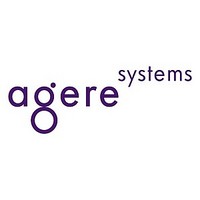OR3T125 Agere Systems, OR3T125 Datasheet - Page 25

OR3T125
Manufacturer Part Number
OR3T125
Description
3C and 3T Field-Programmable Gate Arrays
Manufacturer
Agere Systems
Datasheet
1.OR3T125.pdf
(210 pages)
Available stocks
Company
Part Number
Manufacturer
Quantity
Price
Company:
Part Number:
OR3T125-6PS208
Manufacturer:
LATTICE
Quantity:
30
Company:
Part Number:
OR3T125-6PS240-DB
Manufacturer:
LUCENT
Quantity:
96
Part Number:
OR3T125-6PS240-DB
Manufacturer:
LATTICE
Quantity:
20 000
Company:
Part Number:
OR3T1256PS208-DB
Manufacturer:
AGERE
Quantity:
201
Part Number:
OR3T1256PS208-DB
Manufacturer:
LATTICE
Quantity:
20 000
- Current page: 25 of 210
- Download datasheet (5Mb)
Data Sheet
June 1999
Programmable Logic Cells
PLC Latches/Flip-Flops
The eight general-purpose latches/FFs in the PFU can
be used in a variety of configurations. In some cases,
the configuration options apply to all eight latches/FFs in
the PFU and some apply to the latches/FFs on a nibble-
wide basis where the ninth FF is considered indepen-
dently. For other options, each latch/FF is independently
programmable. In addition, the ninth FF can be used for
a variety of functions.
Table 7 summarizes these latch/FF options. The
latches/FFs can be configured as either positive- or
negative-level sensitive latches, or positive or negative
edge-triggered flip-flops (the ninth register can only be
FF). All latches/FFs in a given PFU share the same
clock, and the clock to these latches/FFs can be
inverted. The input into each latch/FF is from either the
corresponding LUT output (F[7:0]) or the direct data
input (DIN[7:0]). The latch/FF input can also be tied to
logic 1 or to logic 0, which is the default.
Table 7. Configuration RAM Controlled Latch/
* Not available for FF[8].
Lucent Technologies Inc.
Common to All Latches/FFs in PFU
LSR Operation
Clock Polarity
Front-end Select*
LSR Priority
Latch/FF Mode
Enable GSRN
Set Individually in Each Latch/FF in PFU
Set/Reset Mode
By Group (Latch/FF[3:0], Latch/FF[7:4], and FF[8])
Clock Enable
LSR Control
Function
Flip-Flop Operation
Asynchronous or synchronous
Noninverted or inverted
Direct (DIN[7:0]) or from LUT (F[7:0])
Either LSR or CE has priority
Latch or flip-flop
GSRN enabled or has no effect on
PFU latches/FFs
Set or reset
CE or ASWE or none
LSR or none
Options
(continued)
The eight latches/FFs in a PFU share the clock (CLK)
and options for clock enable (CE), local set/reset (LSR),
and front-end data select (SEL) inputs. When CE is dis-
abled, each latch/FF retains its previous value when
clocked. The clock enable, LSR, and SEL inputs can be
inverted to be active-low.
The set/reset operation of the latch/FF is controlled by
two parameters: reset mode and set/reset value. When
the global set/reset ( GSRN ) and local set/reset (LSR)
signals are not asserted, the latch/FF operates normally.
The reset mode is used to select a synchronous or
asynchronous LSR operation. If synchronous, LSR has
the option to be enabled only if clock enable (CE or
ASWE) is active or for LSR to have priority over the
clock enable input, thereby setting/resetting the FF inde-
pendent of the state of the clock enable. The clock
enable is supported on FFs, not latches. It is imple-
mented by using a 2-input multiplexer on the FF input,
with one input being the previous state of the FF and the
other input being the new data applied to the FF. The
select of this 2-input multiplexer is clock enable (CE or
ASWE), which selects either the new data or the previ-
ous state. When the clock enable is inactive, the FF out-
put does not change when the clock edge arrives.
ORCA Series 3C and 3T FPGAs
25
Related parts for OR3T125
Image
Part Number
Description
Manufacturer
Datasheet
Request
R

Part Number:
Description:
Power Modules DC/DC Converters
Manufacturer:
Agere Systems
Datasheet:

Part Number:
Description:
Quad differential driver. Intern. term. none. Surge-protection no.
Manufacturer:
Agere Systems
Datasheet:

Part Number:
Description:
InGaAs Avalanche Photodetector
Manufacturer:
Agere Systems
Datasheet:

Part Number:
Description:
Ringing Access Switch
Manufacturer:
Agere Systems
Datasheet:

Part Number:
Description:
Quad differential receiver
Manufacturer:
Agere Systems
Datasheet:

Part Number:
Description:
ORCA feild-programmable gate array. Voltage 3.3 V.
Manufacturer:
Agere Systems
Datasheet:

Part Number:
Description:
Quad differential driver. Intern. term. none. Surge-protection no.
Manufacturer:
Agere Systems
Datasheet:

Part Number:
Description:
Quad Differential Line Receivers
Manufacturer:
Agere Systems
Datasheet:

Part Number:
Description:
4096-channel, 32-highway time-slot interchager
Manufacturer:
Agere Systems
Datasheet:

Part Number:
Description:
QUAD-FET (Fast Ethernet Transceiver) for 10Base-T/100Base-TX/FX
Manufacturer:
Agere Systems
Datasheet:











